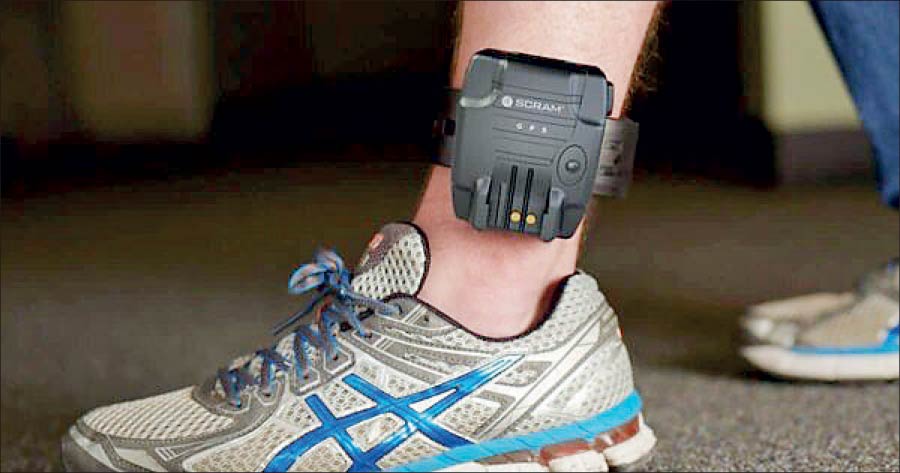Monday Dec 15, 2025
Monday Dec 15, 2025
Monday, 25 August 2025 00:00 - - {{hitsCtrl.values.hits}}

Electronic anklets are a viable and cost-effective solution to the problem of prison overcrowding caused by excessive remanding pre-trial detainees
 This was written shortly after the National Movement for Social Justice conducted a webinar on problems with remanding practices in the aftermath of the neurologist and her daughter being remanded. But now that the question of remanding President Wickremesinghe is front and centre, completion cannot wait.
This was written shortly after the National Movement for Social Justice conducted a webinar on problems with remanding practices in the aftermath of the neurologist and her daughter being remanded. But now that the question of remanding President Wickremesinghe is front and centre, completion cannot wait.
Congestion caused by remandees
According to the World Prison Brief, the total number of prisoners Sri Lankan prisons can hold was 13,241 in 2025. But the prisons held 32,747 persons in inhumane conditions. Worse, two thirds of these prisoners had not been convicted; they were pre-trial detainees/remand prisoners. Sri Lanka has one of the highest rates of pre-trial detention in the world.
Food, sanitation, and security are inadequate, according to a 2020 study by the Human Rights Commission of Sri Lanka. Overcrowding forces prisoners to take turns sleeping or to sleep inside toilets as they do not have enough space to lie down. Drug use and violence is rife, subjecting detainees to danger. The prisons are unbearably hot and infested with large numbers of rats, pigeons, and bed bugs.
This is why many high-profile remandees get transferred to the prison hospital. This may contribute to understanding allegations of bribery associated with the prison hospital (and why the former Deputy Director is currently in remand).
If something can be done to stop incarcerating persons awaiting trial at the excessive rate our judges do, the pressure on the system giving rise to corruption may be relieved. But short of that, there may be a technological remedy worth trying.
Electronic monitoring
Ordering persons awaiting trial to wear electronic anklets came up in the news recently when Jair Bolsanaro, the former President of Brazil who is awaiting trial for plotting to overthrow and having knowledge of plans to assassinate his successor, was ordered to wear one. Those who watch Hollywood movies may have seen anklets woven into plotlines.
Electronic monitoring (EM) refers to the attaching of a device to an individual’s ankle or wrist to track their location and to alert the authorities if he/she does not stay within the designated area, such as their home. The Government can relieve itself of the responsibilities of feeding and guarding remandees. All it must do is remotely monitor them and respond when the conditions are being violated. The expensive prisons can be used for convicts and remandees who violate the rules.
This is in operation in many countries including the US, England, Scotland, France, Brazil, and Thailand. Vietnam will implement it soon.
In Brazil, EM was deployed to track convicted criminals in 2010. Since 2011, it has been used to remotely track persons awaiting trial. By 2019, there were 60,347 active devices, which amounted to under nine percent of the prison population in the country. The use of EM increased during the COVID-19 pandemic as it was used to avoid the spread of the virus. It was relatively successful in combating the virus, as the mortality rate in prisons during the pandemic was 0.41% compared to 2.56% in the country.
The law requires the monitored person to always wear the anklet and keep it charged. If not, the monitoring centre would be alerted, and law enforcement would arrive. Those wearing anklets are required to stay at home or avoid pre-determined locations and must return home at pre-established times. If the conditions are violated, the individual may be incarcerated.
The anklets in Brazil are managed by the company Spacecom, using GPS and cellular towers. It has two SIM cards; one connects to the internet and the other sends geolocation data to the tracking centre.
Costs
The cost of an electronic bracelet in Brazil was around 200 Brazilian Reals (Rs. 10,800) in 2024. The cost of monitoring a prisoner through EM is said to be 70% lower than physical incarceration.
The calculation of costs to maintain a prisoner in Sri Lanka was estimated by dividing the 2024 revised estimate of recurrent expenditure of the Department of Prisons by the total prison population of Sri Lanka. Total recurrent expenditure is Rs. 15.6 billion. The annual cost per prisoner is Rs. 477,710. This only accounts for operational recurrent expenditure, which accounts items such as food and staff expenses.
Police stations across the country would have to be equipped to respond quickly to alerts generated by EM. Given the reduction of personnel engaged on VIP security, this would not require additional costs.
Electronic anklets are a viable and cost-effective solution to the problem of prison overcrowding caused by excessive remanding pre-trial detainees. The objectives of remanding these persons are to ensure that they will appear in court when their cases are heard and to prevent interference with investigations. Both objectives are achievable using existing proven technology. Not adopting this solution would support the claim some make that remanding is the punishment that the Government metes out given the inefficiency of its investigators and prosecutors.